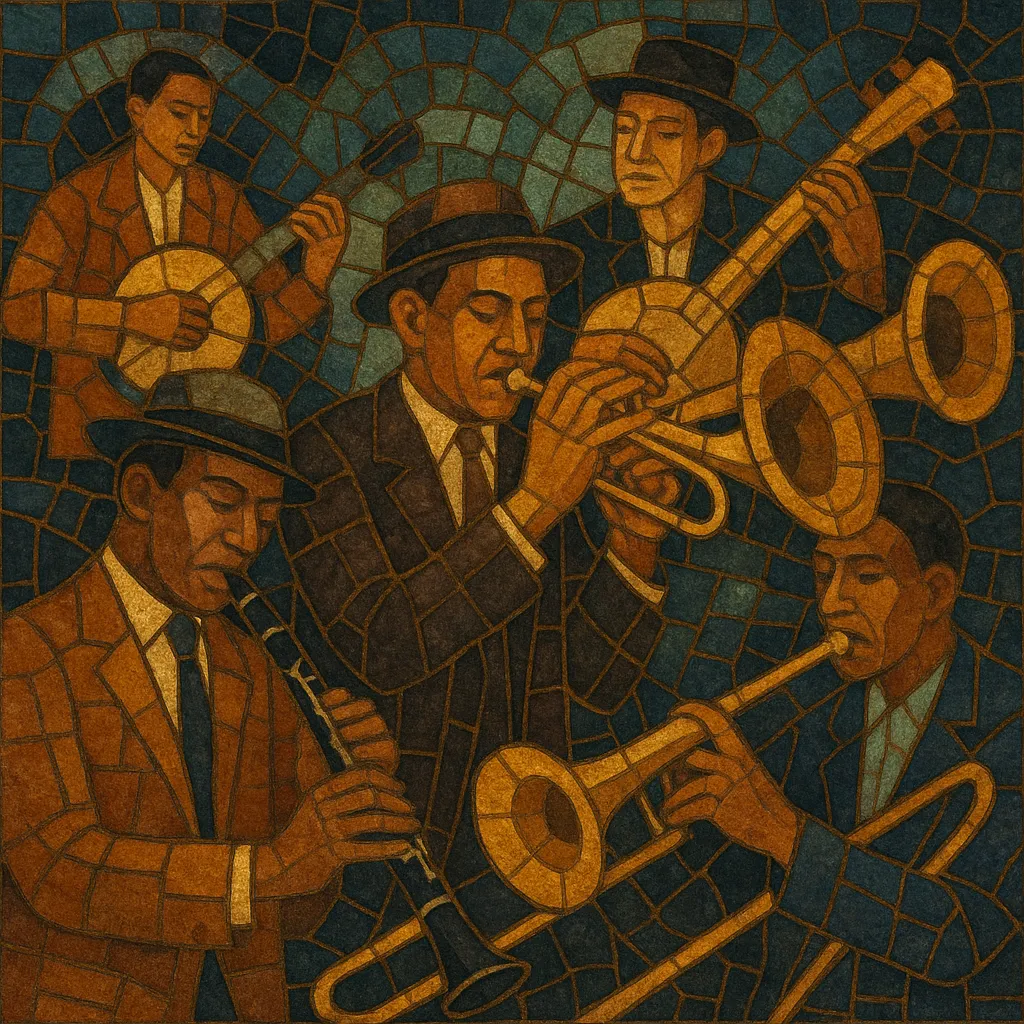
Classic jazz refers to the earliest, pre-swing era of jazz that coalesced in New Orleans and spread to Chicago and New York during the Jazz Age. It is characterized by small ensembles, collective improvisation, and a two-beat feel rooted in marches, ragtime, and the blues.
A typical front line of cornet/trumpet, clarinet, and trombone spins interlocking melodies over a rhythm section of banjo or piano, tuba or string bass, and drums. Forms such as the 12-bar blues and 16- or 32-bar popular song structures dominate, and arrangements often alternate ensemble choruses with brief breaks and solo spots. The music retains the "Spanish tinge" (habanera rhythms), heavy use of mutes and growls, and call-and-response textures that reflect both African American and Creole traditions.
Classic jazz emerged in the multicultural milieu of early 20th‑century New Orleans. Brass band parades, ragtime pianists, blues singers, Creole dance orchestras, and church spirituals all fed a new ensemble practice built on collective improvisation. By the mid‑1910s, cornet and clarinet lead lines, trombone “tailgate” counterlines, and a two‑beat rhythmic foundation were common.
In 1917 the Original Dixieland Jass Band made the first jazz records, sparking national curiosity. Soon after, Black innovators defined the style’s language: King Oliver’s Creole Jazz Band (with a young Louis Armstrong), Jelly Roll Morton’s Red Hot Peppers, and Sidney Bechet brought sophisticated arranging, the "Spanish tinge," and virtuosic soloing. Migration to Chicago and New York during the 1920s amplified the music’s reach, where studio technology and nightclubs accelerated its popularity.
While early classic jazz prized collective polyphony, the late 1920s saw the rise of the virtuoso soloist. Louis Armstrong’s Hot Five and Hot Seven recordings revolutionized phrasing, swing feel, and melodic invention, laying groundwork for future jazz styles while still retaining classic ensemble devices like breaks, stop‑time, and ensemble codas.
By the 1930s, classic jazz flowed into larger ensembles and helped incubate swing. A mid‑century traditional jazz revival—especially on the U.S. West Coast (Lu Watters, Turk Murphy) and in the U.K. (Chris Barber, Acker Bilk)—reaffirmed the small‑group, polyphonic sound. Today, classic jazz remains foundational: it informs jazz pedagogy, community “trad” scenes, and historically informed performances worldwide.

